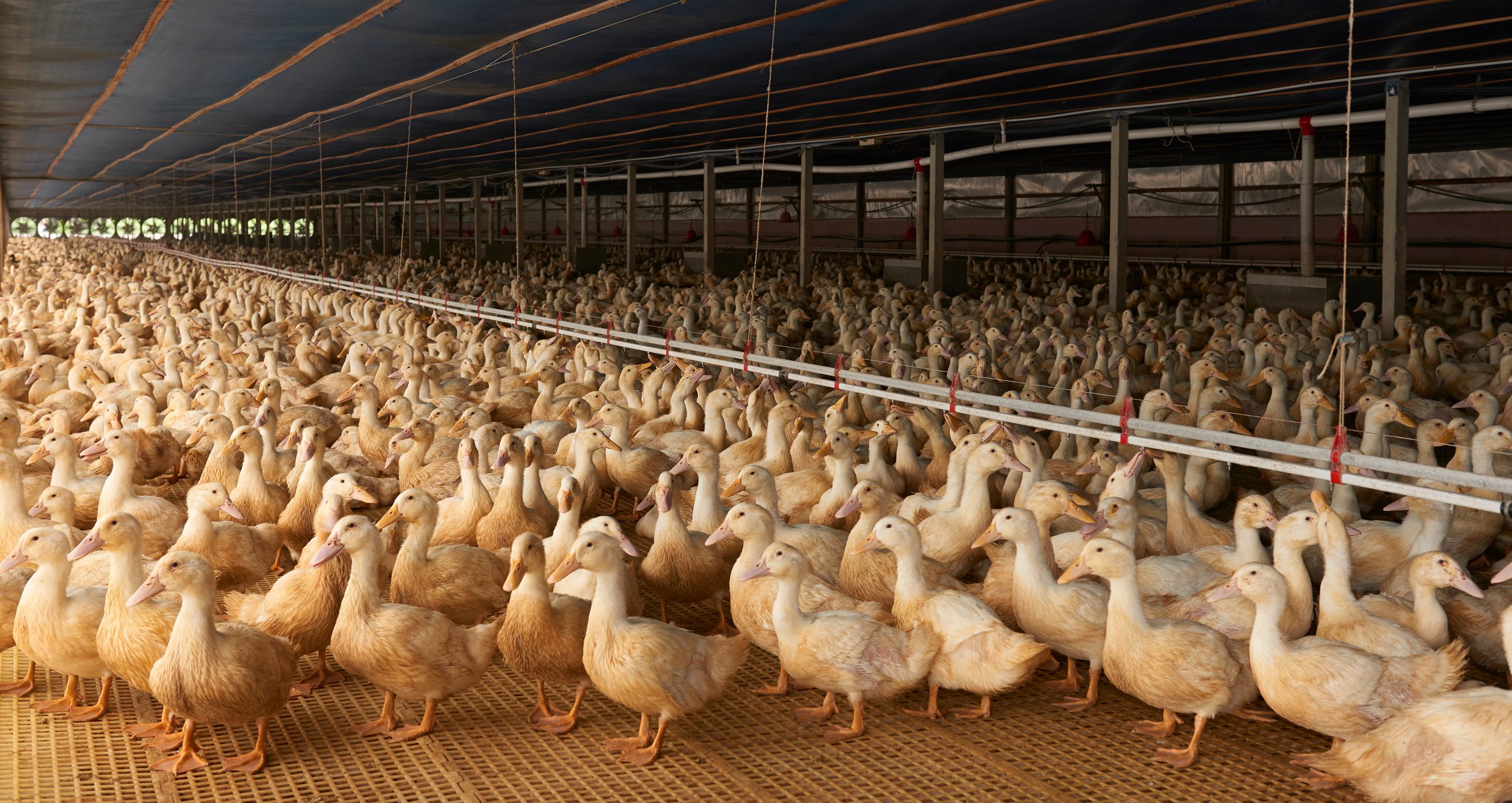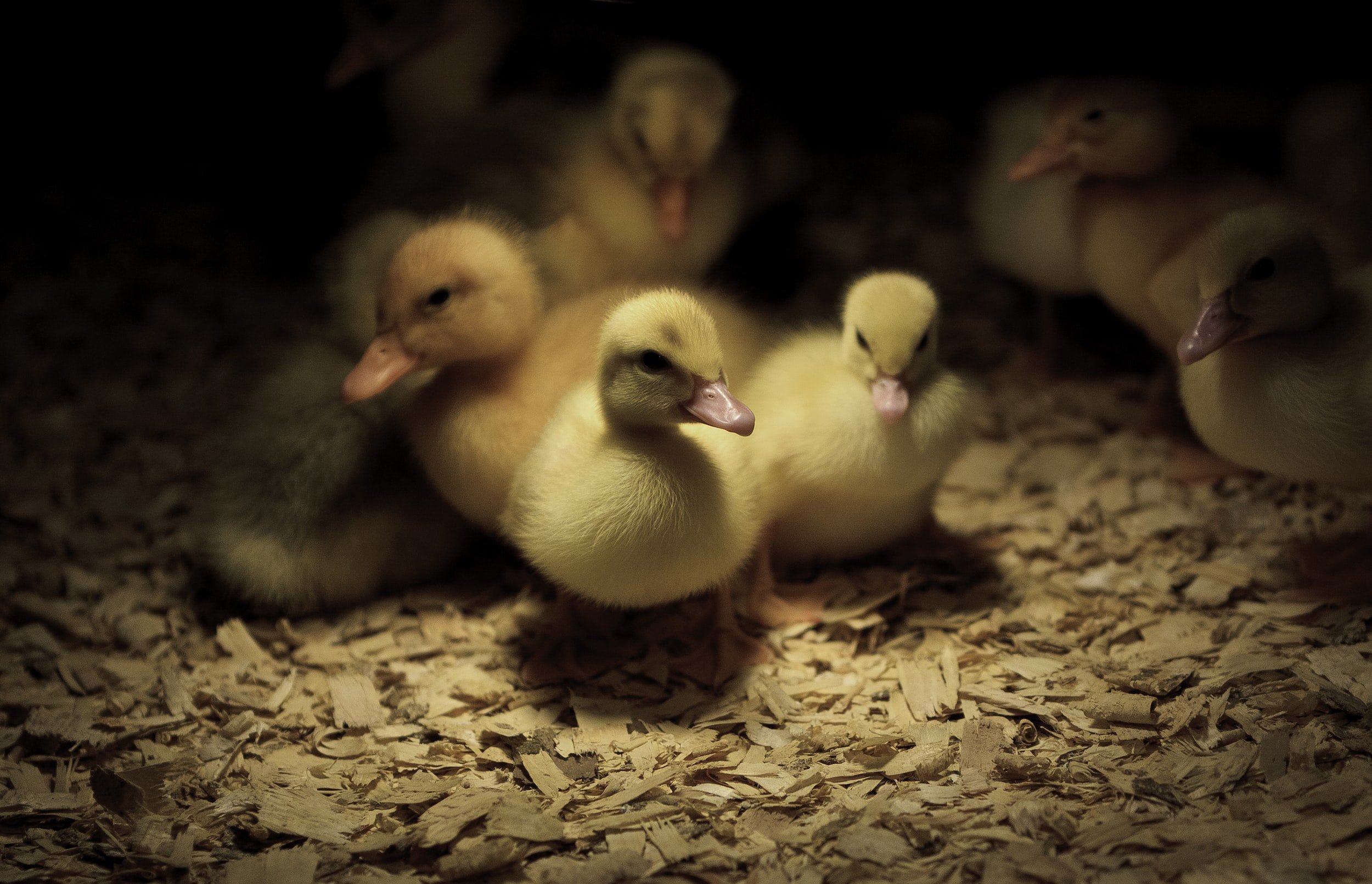
Ducks
What you should know about ducks
The life of ducks in agriculture
When you eat duck on Christmas Eve, have you ever considered what the duck's life has been like? How are ducks actually raised, and do they enjoy good animal welfare? Read on below to gain insight into the life of ducks in agriculture.
Large flock sizes and insufficient space
In nature, ducks live in large flocks. They are very social animals and communicate with each other using both sounds and body language. They live harmoniously with each other and almost never fight. In Denmark, around 39,000 ducks (2024) are raised for slaughter each year. In conventional farming, ducks live in flocks of up to 10,100 individuals. They are allowed to grow for 8 or 14 weeks and are slaughtered when they reach a weight of around 3-4 kg. Free-range ducks live in flocks of up to 4,000, and organic ducks – which account for around 7% of total production and are mostly exported abroad – live in flocks of 3,600.
Feather plucking and cannibalism
So many individuals gathered in one place naturally leads to a lack of space – especially when you consider how much space the ducks could have had in the wild. Scientific studies have shown that large flock sizes and insufficient space harm the ducks and lead to welfare problems similar to those seen in broiler chicken farming, such as feather pecking and cannibalism. It is believed that cannibalism is caused by several different environmental deficiencies in the ducks' environment, which together are responsible for the abnormal behavior. In an attempt to stop cannibalism, the lights in the pens are sometimes turned off for several hours, which stops the cannibalism but destroys the ducks' opportunity to engage in natural behavior.
Walking difficulties
Ducks in the slaughter industry often have leg problems. One study showed that around 21% of the ducks examined had moderate or severe walking problems. Other studies have shown that around 88% of the ducks examined had footpad lesions caused by the amount of manure and ammonia on the floor areas.
Stunning in electrified water and bleeding
When the ducks are to be slaughtered, they are hung alive by their legs, which puts strain on their bodies due to their heavy weight. The ducks are transported through a system via a conveyor belt. When they are to be stunned, they are driven over a trough of water, which is electrified. The ducks' heads are lowered and an electric shock is administered to render them unconscious. The conveyor belt then carries them on to a machine that cuts their carotid arteries, and the ducks die from blood loss. The stunning method does not work optimally, as some of the ducks lift their heads and are thus fully conscious when their throats are cut. This slaughter method is standard practice and applies to conventional, organic, and free-range ducks.
Social and valuable animals
Ducks are social animals that form relationships with each other in the flock. They love to swim and are designed to spend a lot of time in the water, which they are unable to do in conventional farming. They can eat, swim, clean their feathers, play, and relax in the water. Ducks are valuable and deserve to live a free life.
Fortunately, there are many ways you can help put an end to the suffering of ducks!
Eat Mock Duck instead of duck! Search for "Mock Duck recipe" on Google and explore delicious plant-based recipes.
If you celebrate Mortens Aften or Christmas, ask the others you are spending time with well in advance whether you should try a plant-based recipe this time.
Sign up and receive free, delicious plant-based recipes and much more at VeganerUdfordringen.dk.
Questions and answers: Specifically about foie gras
What is foie gras?
Foie gras, which means "fatty liver" in French, is made from the liver of ducks or geese. This liver is abnormally enlarged as a result of force-feeding, a process known as 'gavage', in which the birds are systematically fed large amounts of feed through a tube leading down into the esophagus.
Why is foie gras bad?
The production of foie gras is a clear manifestation of animal cruelty, which raises serious questions about the ethics of our food system. Force-feeding, the cornerstone of foie gras production, is a brutal and unnecessary practice that causes significant suffering to ducks and geese. By stuffing the birds with excessive amounts of feed through a tube forcibly inserted into their esophagus, their livers become abnormally enlarged, leading to serious health problems and extreme physical discomfort. This treatment not only violates basic animal welfare standards, but also illustrates a profound lack of respect for these sensitive, intelligent creatures.
Support our work
Your support makes the world a fairer place for ducks and all other animals.


